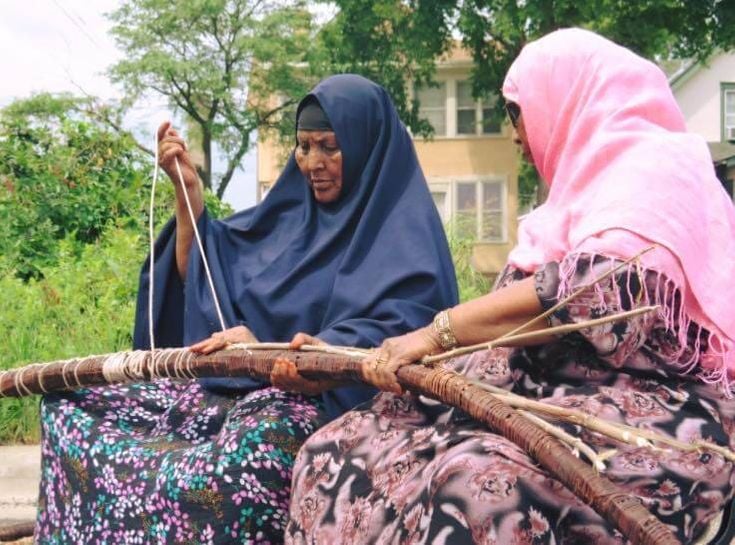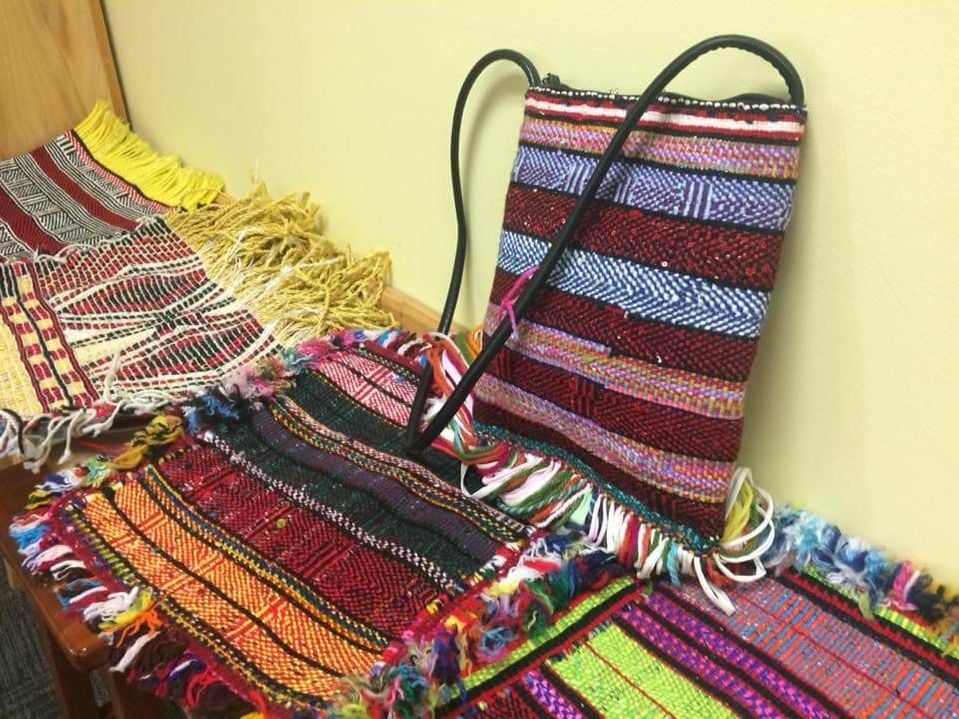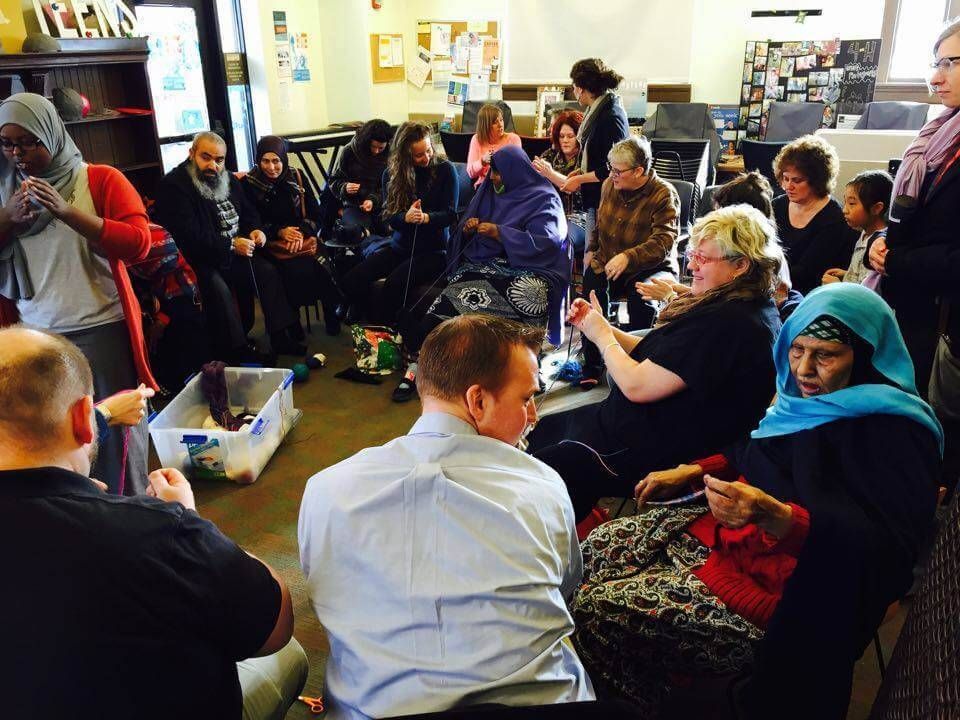Making Woven Art without Tools
Somali elders teach traditional finger weaving for the public
Building houses and covering them with woven mats has traditionally been the responsibilities of women in nomadic Somali societies. Their work is invaluable to the survival of families, as the huts provide safe and warm place for them to rest and sleep. Not only so, women have used weaving to create necessary household items from scratch, such as water jars, baskets, and food containers. Finger weaving highlights the historical importance of female labor in nomadic Somali cultures and the artistic creativity of their craft.
Even more surprising fact about traditional Somali weaving is that all weaving is done just by fingers without any tools. No hooks, no looms, no spools. With just two hands, weavers are able to create watertight and durable pieces that are both functional and beautiful.

As many Somalis emigrated to different countries after the civil war started, weaving has also changed its form and function. It was no longer necessary for women to build portable huts or make woven baskets. For newly immigrated Somalis, weaving transformed from a means of survival to a tradition that needed to be kept alive for the next generation to learn and remember. In Somalia, weavers used their native grass as raw materials. In Minnesota, weavers use colorful yarn to make decorative hangings and fashionable hand bags. While these colorful bags may not be the exact replica of how weaving looked like in Somalia, they show the flexibility and creativity of a longstanding tradition that can adapt to different needs.


At the Somali Museum of Minnesota, some elders from the community are working to pass down their knowledge to the younger generation and the public. As resident artists at the museum, these ayeeyos ('grandmothers' in Somali) go out to schools, public libraries, and community centers and demonstrate their skills to students.
When I first visited the weaving class, I struggled because of a big language gap. I did not understand Somali, and the artists did not speak English. But soon enough, we started to communicate in our own ways, as artists patiently demonstrated the weaving and guided my hands (and feet) along the process. The experience of communicating without a shared language encouraged me to become more creative and expressive with my intentions and feelings.
Ardho Ismail, one of the weaving artists, says that teaching students always makes her feel proud. She believes that the knowledge she shares does not live by itself, but with the memory of sitting down with the artists. She says, "Even after the class ends, students always remember me as 'Mama Ardho' and think about the class whenever they weave in the future."

This post is part of a Somali Community Digital Storytelling Project. To learn more about the project, view here.
Special Thanks:
Somali Museum of Minnesota
Ardho Ismail
Hennepin County Library
